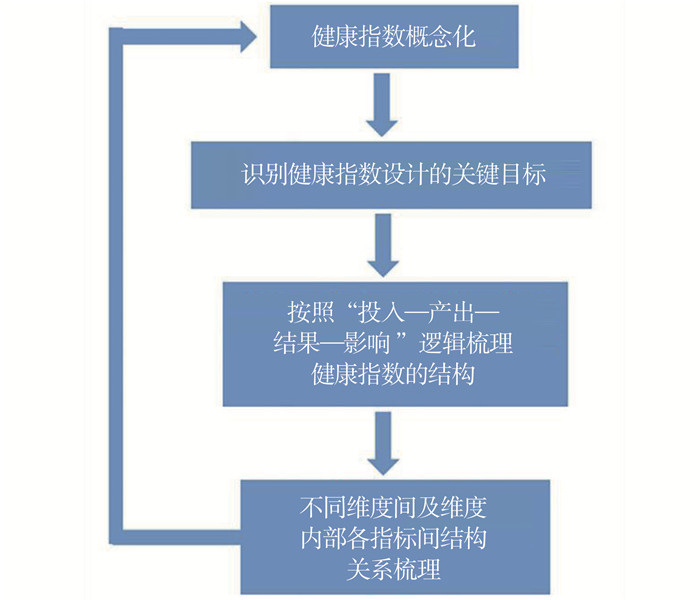Logical framework for health index
WANG Qing and ZONG Jing-ru contributed equally to this article
More Information
-
摘要: 本研究旨在构建健康指数逻辑框架,服务健康大数据背景下健康指数的构建和“评改结合”的政策应用。以健康指数目标和问题为导向,在已有研究的基础上,明晰健康指数的内涵和外延,并将其概念化,这是逻辑框架的基础环节。其后,围绕关键目标,按照“投入-产出-结果-影响”逻辑总结归纳健康指数全过程影响因素并梳理各个因素间的交互作用,最终形成健康指数的逻辑框架。概念框架有助于抽象复杂的健康问题,反映问题的本质特征,引领健康指数定量化评估,并提出切实有效的改进政策。Abstract: This study aims to construct a logical framework for health index to promote advance through assessment in the context of big data. Guided by the principles of goal-orientation and problem-orientation, the definition of the studied health index, including its connotation and denotation, is identified to provide basis for the construction of health index. Afterwards, in order to meet key targets, following the "input-process-outcome-impact" logic, health-related influencing factors, as well as the interaction between indicators are sorted out to form the logical framework of studied health index. The logical framework of health index is a useful tool to abstract complex health problems, and reflect the essential characteristics of the problems, which provides a guide to quantify health index, and design intervention measures.
-
Key words:
- Health index /
- Logical framework /
- Goal-oriented /
- Problem-oriented /
- Life-cycle influencing factors /
- Interaction
-
-
[1] Varpio L, Paradis E, Uijtdehaage S, et al. The distinctions between theory, theoretical framework, and conceptual framework[J]. Acad Med, 2020, 95(7): 989-994. DOI: 10.1097/ACM.0000000000003075. [2] Reis S, Morris G, Fleming LE, et al. Integrating health and environmental impact analysis[J]. Public Health, 2015, 129(10): 1383-1389. DOI: 10.1016/j.puhe.2013.07.006. [3] Chandrakumar C, McLaren SJ. Towards a comprehensive absolute sustainability assessment method for effective earth system governance: defining key environmental indicators using an enhanced-DPSIR framework[J]. Ecol Indic, 2018, 90: 577-583. DOI: 10.1016/j.ecolind.2018.03.063. [4] 中共中央国务院. 《"健康中国2030"规划纲要》[EB/OL]. (2016-10-25)[2022-06-25]. http://www.gov.cn/xinwen/2016-10/25/content_5124174.htm.The State Council of China. Outline of the Healthy China 2030 Plan[EB/OL]. (2016-10-25)[2022-06-25]. http://www.gov.cn/xinwen/2016-10/25/content_5124174.htm. [5] WHO. Measuring the age-friendliness of cities: a guide to using core indicators[M]. Geneva: WHO Press, 2015: 13-24. [6] Kjellstrom T, Friel S, Dixon J, et al. Urban environmental health hazards and health equity[J]. J Urban Health, 2007, 84(1): 86-97. DOI: 10.1007/s11524-007-9171-9. [7] Webster P, Sanderson D. Health cities indicators—a suitable instrument to measure health? [J]. J Urban Health, 2013, 90(1): 52-61. DOI: 10.1007/s11524-011-9643-9. [8] 傅华, 戴俊明, 高俊岭, 等. 健康城市建设与展望[J]. 中国公共卫生, 2019, 35(10): 1285-1288. DOI: 10.11847/zgggws1126106.Fu H, Dai JM, Gao JL, et al. Healthy city construction in China: accomplishments and prospects[J]. Chin J Public Health, 2019, 35(10): 1285-1288. DOI: 10.11847/zgggws1126106. -





 下载:
下载:




